Are Wild Bettas or Domestic Bettas Right for Me?
Bettas are one of the most popular freshwater fish in the aquarium hobby. They are beloved by fishkeepers globally for their unique appearance and feisty personality. The betta genus contains 73 recognized species of betta fish originating in southeast Asia and the Indopacific. Many wild species of betta are threatened, endangered, or critically endangered due to climate change, pollution, and human activity in and around their native environments. A few of the most popular bettas kept by aquarium hobbyists include Betta splendens, Betta imbellis, Betta macrostoma, Betta hendra, and the new Betta jade.
If you’re wondering which betta species is best suited for you, you’re in the right place! Today, we are getting to know some of the most common betta species in the aquarium hobby.
Betta Splendens Care Overview
Betta splendens, the Siamese fighting fish, is a domesticated betta species commonly found in the Western aquarium hobby. Betta splendens is the most popular species amongst new betta hobbyists. These bettas grow 2 to 2.5 inches in length and live for about two to four years in captivity.
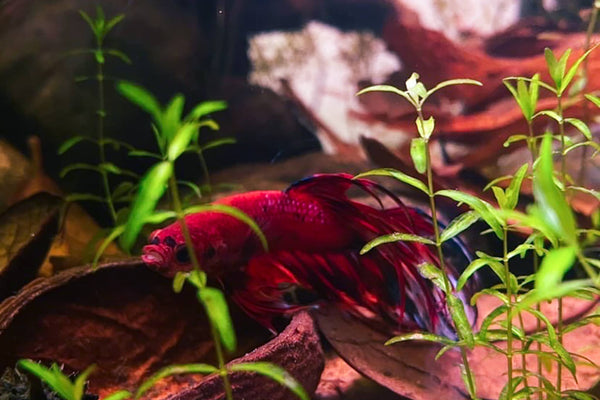
Due to breeding, betta splendens come in a variety of colors, scale patterns, and tail types and are recognizable by their flashy appearance. The pigments that make these bettas so popular do not exist in the scales but in specialized cells called chromatophores in the skin. Chromatophores are also found in octopuses and squids! Some betta splendens carry the marble gene and will change color over time in response to age, stress, and environmental factors. In Latin, the word splendens translates to shining, glittering, or gleaming.
Habitat & Tank Conditions for Betta Splendens
Betta splendens can be comfortably housed in a 5 to 10-gallon aquarium kept between 78-82°F. Because betta splendens is a domesticated species, it does not have a native environment to reference for tank conditions. However, we recommend a similar environment to wild bettas – soft, slightly acidic water, plenty of hides and plant cover, and aquarium botanicals.
Betta Imbellis Care Overview
Betta imbellis, the crescent betta or peaceful betta, is very similar to its cousin betta splendens. Primarily native to Thailand, Indonesia, and Malaysia, betta imbellis is one of the most common wild bettas in the aquarium hobby. Betta imbellis is identifiable by its bright blue or green scales on its dark body and a crescent-shaped tail with a radial pattern. Like betta splendens, betta imbellis grows 2 to 2.5 inches in length and is brightly colored. Males have longer fins and are more colorful than females, which display brown coloring. Betta imbellis has a more peaceful disposition than betta splendens, but males can still display aggression towards each other by flaring.

Habitat & Tank Conditions for Betta Imbellis
In the wild, betta imbellis are found in slow-moving streams and shallow pools. Their black/brown body coloring helps them to camouflage with their tannin-rich environment. You can create this environment at home by adding tannins from botanicals or Betta Tea!
If you’re an intermediate hobbyist ready to keep wild bettas, this might be the fish for you! Betta imbellis are more likely to jump than betta splendens, however, and need a tight-fitting lid on their tank. We recommend the use of plastic wrap and egg-crate to achieve this if you can’t get a tight-fitting glass lid. You can also discourage jumping by adding floating aquarium plants or plant cover at the water’s surface.
Betta Macrostoma Care Overview
Betta macrostoma, also called the spotfin betta, is a vulnerable wild betta from the island of Borneo, the country of Brunei, and Malaysia. Betta macrostoma is larger than betta splendens, growing about 3-4 inches long. Male macrostoma are larger and more colorful than females, displaying vivid red/orange coloring. Sometimes this betta variety is called the Brunei Beauty. This species of betta does not create a bubble nest during breeding, as their native stream habitats move too quickly for bubble nests to stay put. Instead, males will hold their eggs and fry in their mouths for 18-24 days, then spit them out into the water column where they can begin eating their first meals.
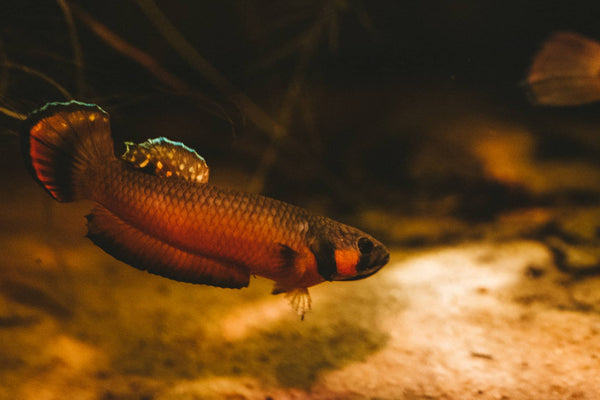
Habitat & Tank Conditions for Betta Macrostoma
In the wild, betta macrostoma live in shallow, murky streams and vernal pools. Their dark coloration allows them to camouflage with their tannin-rich habitat. Like many betta species, betta macrostoma prefers soft, acidic water and tropical temperatures. You can recreate this environment in your home aquarium by adding botanicals such as catappa leaves!
Breeding Macrostoma
Because of their conservation status, many hobbyists choose to keep betta macrostoma in breeding pairs. Betta macrostoma are paternal mouthbrooders, meaning that the father will incubate the eggs in his mouth for a short period ranging from two weeks to a month. This breeding behavior is also called holding. Breeding pairs can comfortably be kept in a 20-gallon aquarium, but betta macrostoma pairs are better for advanced keepers due to their advanced care requirements.
Betta Hendra Care Overview
Betta hendra is a small, rare betta species native to Borneo in Indonesia. Because of pollution and overdevelopment around their native environment, the IUCN (International Union for the Conservation of Nature) lists the betta hendra as critically endangered (at extremely high risk of extinction in the wild). Betta hendra are named after Tommy Hendra, the first person to discover and export this betta species.

Habitat & Tank Conditions for Betta Hendra
Due to their skittish nature, betta hendra prefers small tanks filled with leaf litter and hides to shelter underneath. In the wild, betta hendra are found in the Sabangau peat swamp forests in Borneo, Indonesia. Their native ecosystem resembles a blackwater environment, with an extremely low pH, leaf litter substrate, and thick vegetation. You can recreate this environment at home with Nature Base Borneo substrate, developed specifically for Southeast Asian blackwater biotopes.
If you are keeping a breeding hendra pair, it is especially important to provide extra cover for the female. Botanicals can fulfill this need.
Breeding Betta Hendra
Unlike betta macrostoma which are mouthbrooders, betta hendra build bubble nests to house their eggs during breeding. The male will build a bubble nest to indicate a willingness to mate and will wrap the female to release and fertilize eggs. The male will then transfer eggs to the nest and proceed to guard them until the fry hatch. If you’re looking to help preserve an endangered species through breeding projects, this might be the betta for you! Just bear in mind that betta hendra have specialized care requirements and are best suited to intermediate/advanced fish keepers.
Betta Jade Care Overview
Betta sp. jade is amongst the newest betta species to hit the aquarium hobby, as recently as 2022. This small, unique betta appears to be a hybrid of different wild betta species, having the red fins and head of betta api api, but a dark jade green body (hence the name). There isn’t much research on betta jade, especially among hobbyists, as this fish is still relatively new. We recommend keeping them in RO water, temperatures around 77 degrees , TDS below 75 and feeding a mixture of live, frozen and prepared foods. Betta jade is great for advanced fishkeepers looking to explore and study a recently-discovered betta species.
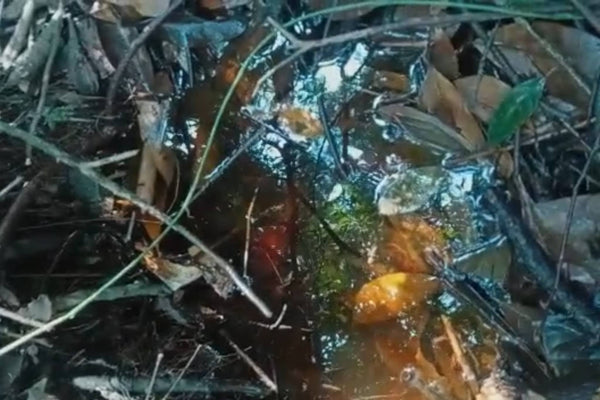
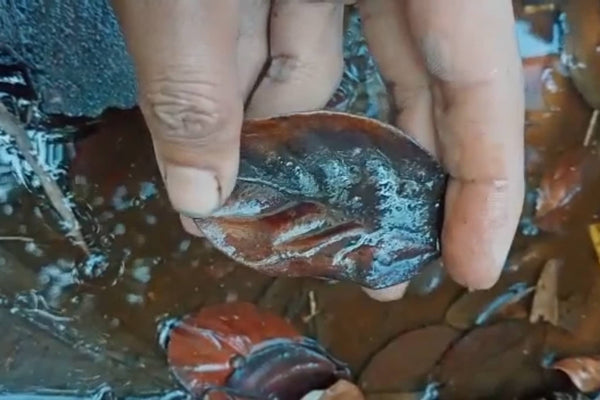
Habitat & Tank Conditions for Betta Jade
Betta jade are native to Sumatra, Indonesia, where the locals have been familiar with this species for years. Freshwater environments in Sumatra are typical of blackwater ecosystems, with low pH and high tannins. A dense leaf litter substrate is recommended like in the above photos, or a bare bottom tank with pre conditioned RO water to lower the pH.
The Easiest Wild Bettas are Betta Imbellis
Famous for their style and personality, bettas are some of the most popular fish in the freshwater aquarium hobby. At Betta Botanicals, we love all species of bettas, which are as unique as you and me. Whether you’re a new or advanced fishkeeper, there is a betta for you! When you’re ready to build your betta ecosystem, we have your back every step of the way. Good luck, and happy fishkeeping!
Written by Clare Mangan, @The.Grumpy.Betta with edits from #TanninBae Himself

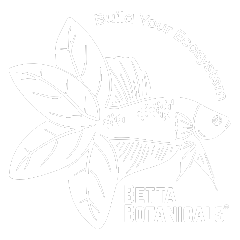
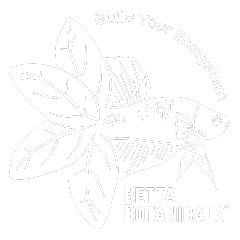




Inspire your friends:
Guide: How to Clean a Blackwater Aquarium
Benefits of Alder Cones in Botanical Method & Blackwater Aquariums
4 comments
Im plakat bettafish breeder I’m getting a pair of blue fighter strain plakat bettafish to breed bettafish are all Democrat🔵. These killiefish breeders are SHOOK I emaile
Super helpful and informative post! I have absolutely zero idea what the other commenter is talking about.
KILLIFISH breeders are scared of the true king and queen bettafish period.😆😆😆😆😆😆😆😆😆
Im plakat bettafish breeder I’m getting a pair of blue fighter strain plakat bettafish to breed bettafish are all Democrat🔵. These killiefish breeders are SHOOK I emailed them to have a debate on which one wins in a territorial battle a fighter plakat bettafish or a northern studfish none replied they’re SHOOK even in Florida, Missouri and Iowa they can’t answer they’re all cowards period.😆😆😆😆😆😆😆😆😆😆😆😆😆😆😆😆😆😆😆😆😆😆